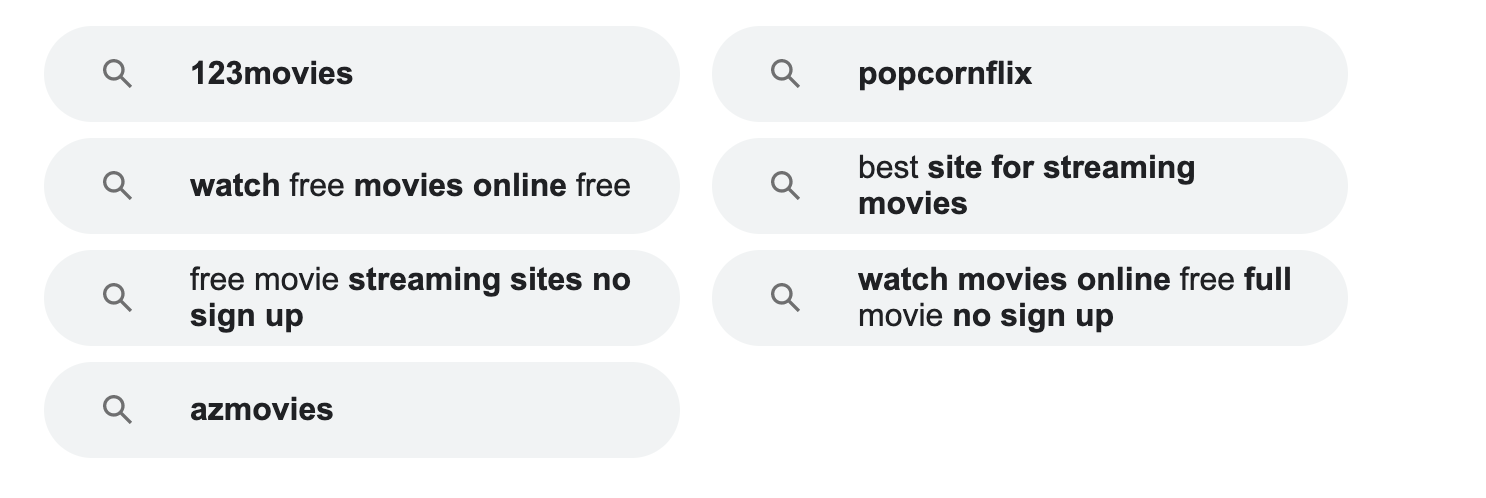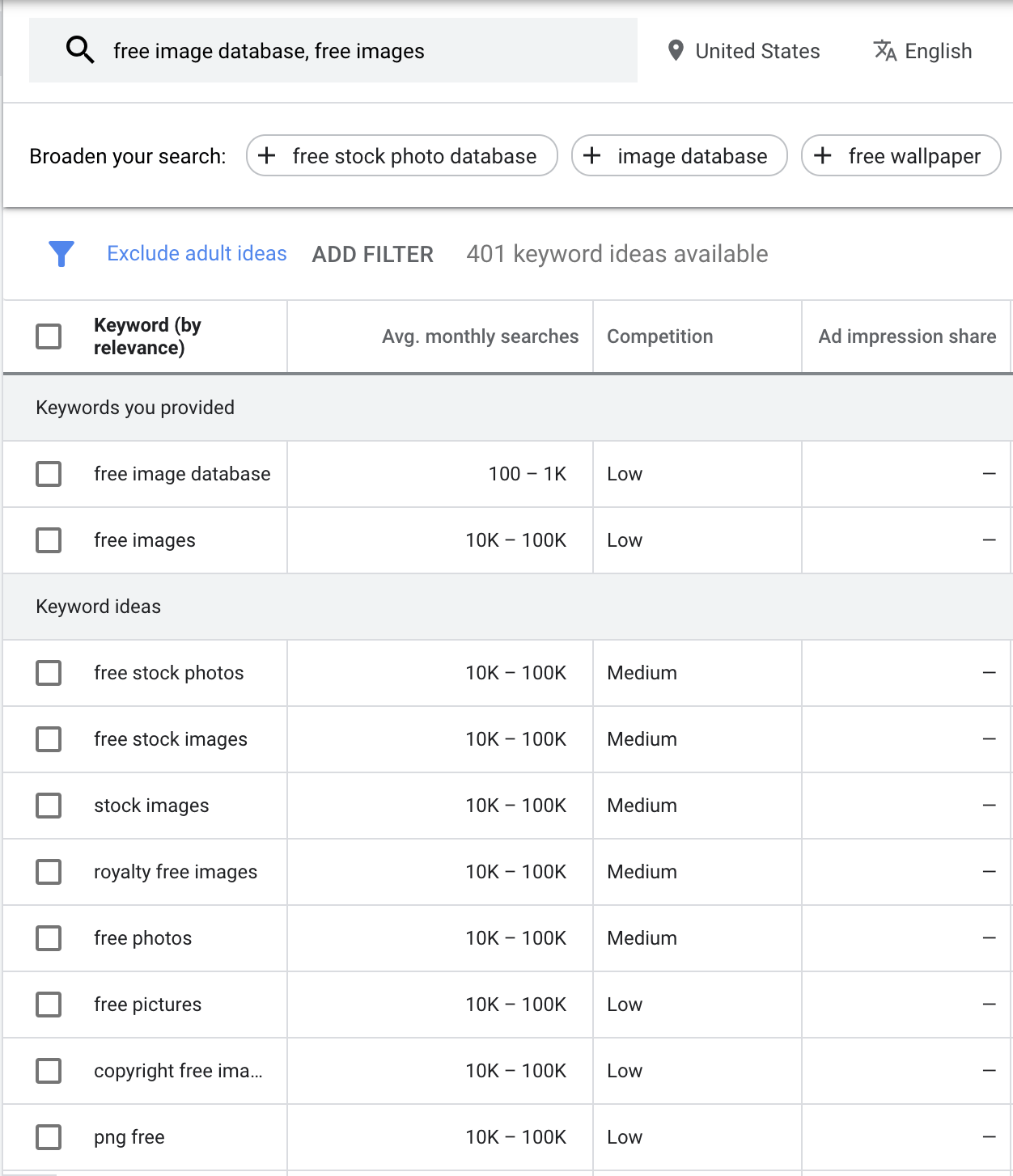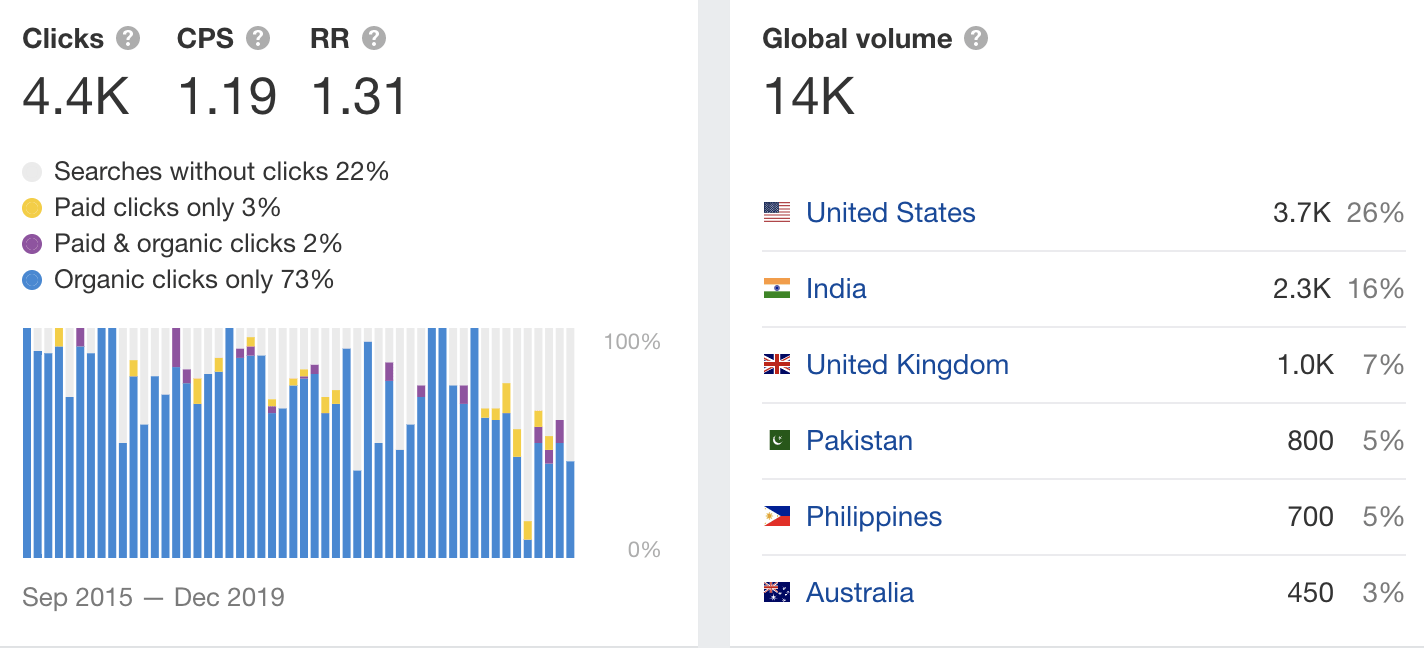SEO today is built on keywords. If no one searches for what you’re publishing, you’re not going to get any organic traffic — no matter how hard you try.
This is why we took the time to write this updated introductory guide for new beginners who want to make money from their website content. This guide will teach you a tried-and-trusted framework for keyword research that you can quickly adapt to your website and objectives. We’ll cover the following topics.
- Discovering keyword phrases
- Selecting the appropriate keywords
- Using well-known keyword research tools
- Tips for conducting advanced keyword research
If you want to improve your Google rankings and monetize your website, you’re going to love this updated guide.
Let’s go over the basics of keyword research before we get into the essentials of finding the best keywords for your website.
What is keyword research?
Keyword research is the process of discovering the search phrases your target customers use when searching for your products, services on the web. After finding these search phrases, the next step is to evaluate, compare, and prioritize the best keyword opportunities for your website.
Why is keyword research important?
Keyword research is the only way to discover what users are typing into search engines. It helps you avoid creating content that no one is searching for. Unfortunately, many website owners make this mistake, and it’s most likely one reason why 90.63% of web pages receive no traffic from Google.
Keyword research can also assist you in answering the following questions:
- How difficult is it to rank for this phrase?
- How much organic traffic should I expect if I rank for this keyword?
- Is it likely that people who search for this keyword will visit my website?
- What kind of content should I create to rank for this keyword?
Finding the correct answers to these questions will assist you in wisely choosing the right keywords.
What words perfectly describe your website’s purpose? First, you must find seed keywords, for example, PDF converter, Free image library, video optimizer. After that, you can use keyword research tools to expand on those concepts and discover even more related keywords.
It’s a simple process, but two things must be true for it to work properly:
- You’ll need to be an expert in your niche.
- You must understand how keyword research tools function and how to make the most of them.
How to perform keyword research
In this chapter, we’ll go over a few practical ways to improve your knowledge in both areas while also uncovering potentially profitable keywords for your website.
- Create a list of ‘seed’ keywords.
- Analyze your competitors’ keywords.
- Use of keyword research tools.
- Study your niche.
1. Create a list of ‘seed’ keywords
Seed keywords are the basis of any keyword research process. They assist you in defining your niche and identifying your competitors. Every keyword research tool requests a seed keyword, which it then uses to generate a massive list of potential keywords.
Coming up with seed keywords is simple if you already have a product or service to promote online. Consider what people will type into Google to find what you’re offering.
If your websites host free images, for example, seed keywords might include:
Free image website
Royalty-free images
Free photos
Free image database
It’s worth noting that seed keywords aren’t always worth targeting with your website’s pages. You’ll use them as “seeds” for the next steps in this process, as the name implies. So don’t worry too much about your seed keywords. Finding them should only take a few minutes.
Move on to the next step once you’ve come up with a few broad ideas for your website’s topic.
2. See what keywords your competitors rank for
The best way to begin your keyword research is by looking at which keywords already send traffic to your competitors. But first, you must determine who your competitors are. That’s where your keyword list from the brainstorming session comes in handy. Simply type one of your seed keywords into Google and see who comes up first.
Try searching for relevant ‘autosuggest‘ queries if none of the top-ranking results for your seed keywords are similar to your site.

Suppose you host free images, for example. In that case, you might find more actual competitors if you search for “Free image database” rather than “free images.” That’s because big stores like yours tend to rank for the former, while small websites tend to rank for the latter.
In either case, use your best judgment to determine competing websites. You shouldn’t necessarily treat large brands like Unsplash or Pexels as competitors if they rank for your seed keyword. Always look for websites that are similar to yours — or the direction you want to take it.
Keyword research with Site Explorer
When you’ve found a few websites that suits you, enter them one by one into a competitive analysis tool like Ahrefs’ Site Explorer. Then look at the Top Pages report. After that, you’ll see their most popular pages ranked by estimated monthly search traffic. The report also displays the “Top keyword” for each page. That’s the source of the majority of its organic traffic.

Just by analyzing one competing website with Site Explorer, we discovered a few interesting keywords for our hypothetical free image website:
Happy birthday images
Easter pictures
4K wallpaper
Free clip art
As you can see, even if you’re very familiar with your industry, studying your competitors can provide you with plenty of unique keyword ideas.
You can repeat the process above for an almost infinite number of keyword ideas.
If you’ve looked at all of the competitors in the search results but still need more keywords, go to Site Explorer’s Competing Domains report.
Simply enter one of your well-known competitors. It will recommend other sites similar to yours based on the number of overlapping keywords that they rank for on Google.
3. Use keyword research tools
Competitors can provide a lot of keyword suggestions. However, there are many keywords that your competitors aren’t targeting, which you can discover using keyword research tools.
All keyword research tools operate in the same manner. You enter a seed keyword, and they search their database for keyword ideas based on that keyword.
The most well-known keyword tool is Google Keyword Planner. It’s free to use, and while it’s geared toward advertisers, you can use it to find SEO keywords.
Let’s see what happens if we put in a few of our seed keywords:

IMPORTANT. Google Keyword Planner’s “Competition” metric has nothing to do with SEO. It indicates how many advertisers are willing to pay to have ads appear in search results for that keyword. If you want to rank organically, you should disregard this tab.
There are a lot of other free keyword research tools available. These are great if you’re on a budget, but their data and functionality are limited.
4. Study your niche
Everything we’ve discussed so far is enough to generate a lot of keyword ideas. However, the process keeps you “in the box” at the same time. It is constrained by your seed keywords and the size and freshness of the database of your chosen keyword tool. As a result, you’ll almost certainly miss out on some great ideas.
You can solve this by digging deeper into your niche. A good place to start is to look through industry forums, groups, and Q&A sites. This will help you discover keywords that none of your competitors have bothered to address.
How to analyze keywords
It’s good to have tons of keyword ideas. But how do you know which ones are the best? After all, it’d be almost impossible to go through them all one by one.
The solution is simple: use SEO metrics before adding them to your content calendar to narrow things down and separate the needed from the unneeded.
To do this, let’s explore five keyword metrics
1. Check the Search Volume
Search volume shows you the average number of keyword searches per month. For example, the monthly search volume of “free stock images” ranges from 1000 to 10000.

On this number, there are three important items to note:
- This is the number of searches, not the number of users who searched. Sometimes a single user could search for a keyword more than once a month (e.g., “Convert Docx”). These searches contribute to the search volume, even when the same person does it.
- You don’t know how long it’ll take to rank for keywords. Even if you appear on Google’s first page, your keyword traffic will rarely exceed 30%.
- This is an average volume of searches for one year.
It’s astonishing because every single searcher ends up clicking the results to find free stock images.
It is also essential to note that search volumes vary with keyword tools. That is because this metric is different for each tool to calculate and update. You can find out more about the complexities of the search volume estimates and why even Google data here and here are not really “exact.”
For two main things, this filter is useful:
Super high-volume keywords are filtered. If your site is new, you probably don’t want to use keywords with 100k+ searches every month because they will be competitive.
We recommend using keywords with lower search volumes. You may want to find low-volume uncompetitive keywords to sprinkle extra traffic with short articles. These are known as keywords for long-distance.
2. Check number of Clicks
Many people might search for a keyword, but that doesn’t mean they’ll click on search results and visit the top-ranking pages. That’s where the Clicks metric in Keywords tools comes in. This metric shows you the average number of monthly clicks on search results for a specific keyword.
Let’s check for a query like “free stock images.”

Competitor’s keywords
You’ll most likely collect a large number of keywords. How do you know which one to start with? Prioritizing high-volume keywords that your competitors aren’t currently ranking for could be a good idea.
Seasonal keywords
Understanding seasonal trends can help you plan your content strategy. For example, suppose you know that “Christmas ornaments” searches peak in October through December. In that case, you can prepare content ahead of time and give it a big push during those months.
Region-specific keywords
You can target a specific location by using Google Keyword Planner to narrow down your keyword research to specific towns, counties, or states. Geographically specific research can assist you in making your content more relevant to your target audience.
How To use your target keywords
Her’s six important ways to use target keywords
1. Page Title
We recommend using the primary keyword phrase at least once in the page’s title, preferably as close to the start of the title tag/element start as possible. Titles influence how search engines evaluate your page’s relevance. They also have a significant impact on a searcher’s willingness to click.
For the search query “monetizing blog posts,” the example above compares some title elements. The title tag for kinsta.com fulfills the searcher’s intent and places the primary keyword at the beginning of the title tag.
We’ve seen the evidence and concluded that it’s a good idea to optimize for both keyword prominence and user intent/visibility.
2. Header <H1> tags
While we’ve seen mixed results using the H1 tag for keyword placements, a user who clicked on a result certainly expects to see a header that matches the page’s title. Or else they will feel misled and leave the webpage immediately. Our most recent rank correlations suggest that a keyword-studded & relevant H1 leads to higher rankings.
We’re not saying that there must be a perfect match between the title and the H1, but they shouldn’t be different.
3. Body text
It should go without saying that using your primary (and secondary keyword phrase(s) in the page’s content is critical. But, according to our findings, it’s not just about keyword use or repetition. Advanced search algorithms help Google to determine relevance and possibly quality.
This means that instead of stuffing your content with keywords, you should create comprehensive, helpful, and relevant content.
We’ve seen plenty of instances where keyword overuse has hurt rankings.
Pay attention to keyword density and use a keyword density tool to check for over-optimization.
4. URLs
An SEO-optimized URL should contain your target keywords. Not only does it aid in search engine relevancy, but URLs are often used as anchor texts on the internet (mostly through copying and pasting).
When we use the URL https://adsterra.com/blog/keyword-research/
to link to this post, the phrase “keyword research” appears right in the text.
Check out our learn article on On-page SEO best practices for more information.
5. Images and alt-tags for images
Images on a keyword-targeted page are beneficial for various reasons. They can aid in SERP rankings directly and indirectly. In the most direct sense, images in your content have a chance to appear in an image search result.
From an indirect (ranking) standpoint, the image’s title, filename, surrounding text, and alt attribute are essential to search engines. SEO-savvy publishers should know that the alt-text serves as an anchor text in a text link when an image is linked.
6. Meta description
The meta description of a page isn’t directly used in search engine ranking algorithms (according to Google and Bing representatives), but that doesn’t mean it’s unimportant. If the meta description tag uses the keyword query, it will usually appear in the search results. It is also one of the factors that searchers consider when deciding to click your link or not.
When keywords appear in the meta description, they are bolded, as you can see in the snippet above, which can help with visibility. A meta description’s primary goal should be to entice the searcher to click. Consider them as ad copy, and use them to entice searchers to your page.
Keyword Research and Monetization
It’s a bad idea to start publishing or writing content for your website without conducting thorough keyword research. It’s also a more significant mistake not to think about how you’ll monetize your website.
These two factors are crucial in determining your success. You will not receive traffic if you create pages around keywords that no one is searching for.
On the other hand, if you publish content around popular topics like how to grow your TikTok followers in 2022, you’ll receive a flock of organic traffic. And monetizing that traffic is easy.
Introduction to Keyword Monetization
How will you monetize your website? It’s not a good strategy to say, “I’ll figure it out once I get the traffic.”
Only by calculating the profitability of a niche can you determine whether or not it’s worthwhile to invest your time and money.
Most of us want to be compensated fairly for our efforts. Here are some niches that could be profitable and how you could monetize them:
- Tips for Promotion in TikTok 2022
- Selection of free courses on marketing, SEO, personal growth, and more
- Good quality Movies websites
- Free online games
Don’t put yourself in a situation where you’ve put in all the effort to build traffic but cannot monetize it. Don’t go after keywords like “free flash games” if you’re not sure how you’ll make money from it.
Product sales might be a sure monetization strategy, but it requires more time, effort, and risks.
If you’re willing to make money with lead generation, make sure you are aware of how to build blockbusting email newsletters.
Finding profitable keywords with Google keyword planner
You need to find keywords with little competition and little keyword difficulty but a high search volume. Search for keywords in your desired profitable niche using Google’s Keyword Planner.
- Search for your keyword in the Keyword Planner. Go to the “Keyword ideas” tab to see how many people search for your keyword and other keyword variations closely related to it.

- Look at the competition column. If the cpc value is “low,” it means that no one is bidding on that keyword. To make money with Adsense, you’ll keywords with higher cpc.
- Sometimes, just because there’s a lot of competition doesn’t mean they’re paying a lot of money. You can get an idea of how much people are paying when they bid on a keyword by looking at the suggested bid column.
- Pick long-tail keywords: The greater the number of words in a keyword, the easier it should be to rank for. A one-word keyword is obviously the most difficult, while a four-word keyword is easier. Ranking for “how to lose 10 pounds in a week” will be easier than ranking for “lose weight.”
A little trick in keyword research
Go to Google.com and search for your keyword
If no one in the top ten has that exact keyword in the title, you know it’ll be easy to rank for. You’ll also have an easier time if the top ten pages aren’t brands. For example, a Youtube listing at #1 or a Wikipedia article tells you that big brands aren’t optimizing for that keyword.
By big brands, we mean websites with high traffic and domain authority. Competing with Youtube or Wikipedia isn’t as difficult.
Here’s what you should look out for:
- Is the content on the top listed pages optimized
- Are they high traffic / big websites?
If the answer is no, then you should be confident that you can compete in that niche.
Example
Let’s compare this situation to someone who recently created a website for cryptocurrencies. You have popular websites: Coinmarketcap (website), Coinbase (brand), Coingecko, Crypto.com, and others.
Then, we have news outlets covering the crypto market, such as Bloomberg, CNBC, and others.
Finally, there are the actual cryptocurrency websites: Binance, The Graph, Cardano, and others.
Is it wise to enter a niche where you’ll be up against well-known brands, news outlets, and industry giants, all of whom are competing for the exact keywords as you? No.
Even if a brand’s page isn’t optimized, Google will give it a higher ranking because of its higher domain authority.
Conclusion
In summary, ensure that your keywords can be effectively monetized — that they have buying intent and that advertisers actively bid on those terms, resulting in high competition.
Then choose the keywords for which the top ten pages are not optimized for their titles and are not brand results. Doing this gives your new money site a chance to succeed, or else you’ll fail before you’ve even written your first article.
